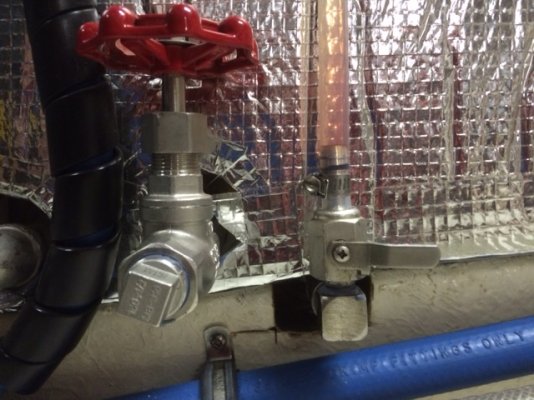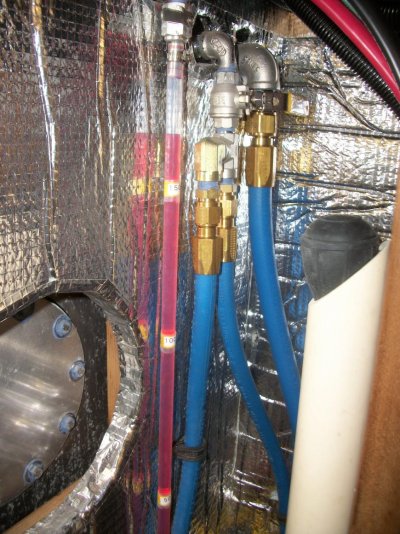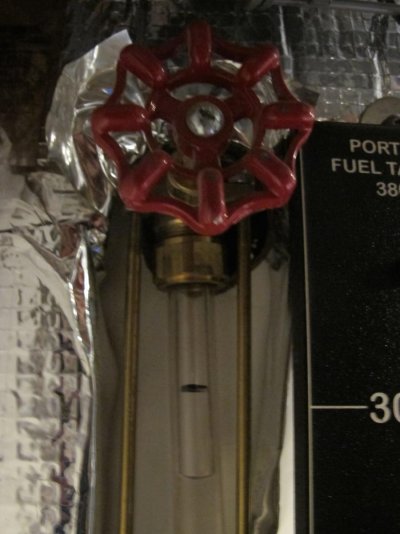JDCAVE
Guru
- Joined
- Apr 3, 2011
- Messages
- 2,902
- Location
- Canada
- Vessel Name
- Phoenix Hunter
- Vessel Make
- Kadey Krogen 42 (1985)
The PO replaced the two back iron tanks with (700 gallons total), with 4 aluminum tanks (760 gallons total). The two forward most tanks are 200 gallons each and the two aft tanks are 180 gallons each. Each tank has a sight gauge with a petcock, top and bottom.
The petcocks are kept in the closed orientation. However, sometimes one forgets to close them. I have found that two of the bottom petcocks "weep" a bit only when they are in the open orientation. Clearly these should be replaced and I am looking for a supplier, if anyone can provide.
On purchase, my surveyor identified these sight gauges as a cause for concern and suggested that I replace them with tank tenders of some sort. He felt they were a fire hazard. I suggested that they could be enclosed in a protective chamber (suggestions please), and he still felt they could fail and be a hazard.
So here are the options as I see it:
1) replace the Petcocks at the very least.
2) 1) above and also put some sort of shield around them.
3) Other low cost alternative? (i.e. put permanent plugs in).
Note: I cannot get a dip stick to the bottom of these tanks.
Thought please.
Jim
The petcocks are kept in the closed orientation. However, sometimes one forgets to close them. I have found that two of the bottom petcocks "weep" a bit only when they are in the open orientation. Clearly these should be replaced and I am looking for a supplier, if anyone can provide.
On purchase, my surveyor identified these sight gauges as a cause for concern and suggested that I replace them with tank tenders of some sort. He felt they were a fire hazard. I suggested that they could be enclosed in a protective chamber (suggestions please), and he still felt they could fail and be a hazard.
So here are the options as I see it:
1) replace the Petcocks at the very least.
2) 1) above and also put some sort of shield around them.
3) Other low cost alternative? (i.e. put permanent plugs in).
Note: I cannot get a dip stick to the bottom of these tanks.
Thought please.
Jim
Attachments
Last edited:




